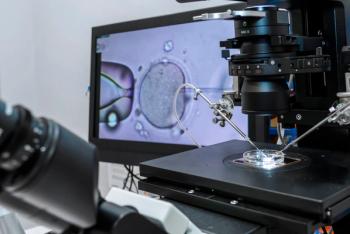
Infertility Myths - Busted!
One in 8 women and men are diagnosed with infertility. In honor of National Infertility Awareness Week, RESOLVE is busting myths and misconceptions about infertility. Click through the slideshow to learn more about these misconceptions and share some myths you've heard in our comments section.
One in 8 women and men are diagnosed with infertility. In honor of National Infertility Awareness Week,
Infertility Diagnosis
Myth: You waited too long to have kids
Busted!
While it is true that fertility decreases with age, youth does not guarantee fertility. Many men and women in their 20s have infertility. And women in their early 40s can get pregnant and deliver healthy babies. However, if you know that you want to have children, the earlier you try, the less likely it is that you will have trouble. --- Alice D. Domar, PhD, The Domar Center for Mind/Body Health
Men and Infertility
Myth: "I don't need to talk to anyone about this. It's private."
Busted!
Dealing with infertility requires that guys evolve beyond the ‘strong silent type.’
Finding another couple-especially another guy-who has gone down the infertility path can normalize the experience. RESOLVE statistics show that 1 in 8 couples trying to have a baby will experience some form of infertility. This means an understanding sounding board may be closer than you think.
Support groups, or even therapy with a psychologist who specializes in infertility can be a great benefit to helping adjust to the realities of medically assisted baby making. --- Denny Ceizyk, Author, Almost a Father Blog
African Americans and Infertility
Myth: Black women don't have fertility issues.
Busted!
This myth is the very reason for my organization. Infertility affects women (and men!) of all races. In fact, some studies find that black women are 1.5 times more likely to experience infertility than women of other races. Many of the factors leading to this higher incidence is in our hesitance to visit the doctor, as well as higher rates of conditions such as fibroids. One great way to squash this myth is to start talking. By opening an honest and guilt-free dialogue, we can make a huge step towards removing the stigmas that holds so many of us hostage.--- Regina Townsend, The Broken Brown Egg
Reproductive Endocrinologists
Myth: "If I see a reproductive endocrinologist, I'm going to need IVF"
Busted!
IVF is actually one of the least common infertility treatments performed. It consists of less than 5 percent of all fertility treatments in the United States.
Reproductive Endocrinologists (REs) usually reserve IVF for patients who absolutely need it. REs begin fertility therapy by performing many other infertility treatments first. The most common include fertility drug therapy, IUI treatment, and surgical procedures, such as hysteroscopy and laparoscopy that correct anatomical problems. All of these treatments cost far less than IVF and are not as emotionally taxing – making all of this good news.
Bottom line: do not jump to the conclusion that you will need IVF treatment to have a baby. Only if you have a medical condition or other predisposing situation that makes IVF necessary will your doctor go directly to IVF treatment. Otherwise, he or she will explore other options with you first. --- Dr. Lowell Ku, Dallas IVF, a member of the Attain Fertility Network
IUI-ART-IVF
Myth: You will have multiple babies (high order multiples).
Busted!
It is true that fertility treatment increases the risk of having a multiple pregnancy. However, most twins result from spontaneous conceptions -- couples who conceive on their own! Triplets or more are a different story; approximately 15% of triplet and 7% of quadruplet pregnancies were conceived spontaneously.
The increased risk of a multiple pregnancy during fertility treatment is a result of the medication used to cause or boost ovulation. Approximately 5-8% of pregnancies conceived with the use of clomiphene citrate, an oral fertility drug, are twins. Triplets or greater occur very infrequently. Use of gonadotropins, which are injectable fertility drugs, result in twins about 15% of the time and more than twins in about 3% of cycles.
The risk of multiple pregnancies is also increased with IVF. Younger women are more likely to have twins than those who are somewhat older. For example, in this country approximately one third of women under the age of 35 undergoing IVF will have twins, where as less than 10% of women over 42 will have twins. The risk of triplets is low in all age groups because most women under 35 will have only one or two embryos transferred.
Though fertility treatment generally increases the risk of a multiple pregnancy, the majority of individuals and couples will have a single baby! --- Jackie Gutmann, MD, RMA of Philadelphia
Domestic Adoption
Myth: The birthmother will take the child back.
Busted!
In many states, the birthmother cannot relinquish her paternal rights until 72 hours after the birth of the child. The birthmother has the right, however, to wait as long as she wishes to relinquish her parental rights following the birth of the child. Until the Consent to Place a Child for Adoption is signed at 72 hours or after, the birthmother can change her mind to not continue with her plan of adoption. Once consents have been signed, however, it is difficult for a birthmother to take her child back unless coercion or bribery can be proven. --- Heather K. Shew-Plummer, Building Arizona Families
International Adoption
Myth: You can adopt from any country you want.
Busted!
When a single person or couple decides to adopt internationally, they must follow the criteria of the country from which they choose to adopt. For instance, some countries allow only couples to adopt, while others work with single clients. Some countries are uncomfortable with an age difference of more than 40 years between the oldest parent and the child, while other countries seem to prefer older parents. Because of societal values, some countries set restrictions on whether a family can already have children upon applying, some have income or weight requirements, and some work only with people who have a certain ethnic heritage. Because of political disturbance, natural disasters, or long-held beliefs, some countries do not participate in international adoption. The best place to find out whether or not it is possible to adopt from a particular country is the U.S. Department of State’s Intercountry Adoption web site,
Foster to Adopt
Myth: You will eventually be able to adopt the child.
Busted!
It is true that in many cases when you are adopting through the foster care system you will be able to adopt the child who is placed in your home. However this depends on many factors; including how long the child has been in foster care and where they are in the court process, as all children in foster care are dependents of children’s court. Sometimes a child placed in your home is reunited with their birth parents or birth family. If that is the case plan for the child, and the birth family follows through with what they have to do for reunification, that child will be reunited and returned to their care. It is more than likely that if you choose to adopt through the foster care system you will be able to adopt. It just may not be the first child who is placed in your home. --- Robyn Harrod, LCSW, Southern California Foster Family and Adoption Agency
Surrogate/Gestational Carriers
Myth: Surrogacy is only for the rich or celebrities.
Busted!
I believe this myth exists because the cost of surrogacy is almost undeterminable. For example, surrogate fees and expenses vary substantially depending on several factors such as “Is the mother (intended parent) using her own eggs or will she need the help of an egg donor?”“Are the parents going through an agency” or do they have a friend or family member willing to carry their baby? Health insurance is also a huge factor to consider as there are some insurance carriers that exclude surrogacy, in which case the parents must purchase a policy that is specifically for surrogacy that costs about $30,000. However, there are some surrogate mothers who have excellent health insurance that does not limit or exclude surrogacy – in these cases, there is little or no cost to the parents for any maternity, labor or delivery of their baby. There are also select fertility centers that offer in-house financing, payment plans or cash discounts to assist their patients.
The Surrogacy SOURCE has worked with all levels of income and have seen the intended parent’s family (grandparents) help with these costs. Others have cashed in stocks, applied for a home loan or borrowed against their retirement in order to fill their home with the “pitter patter of little feet.” There is always more time to make more money, but we are not always young enough to realistically care for a newborn. --- Jamie Williams, The Surrogacy SOURCE
Donor Eggs and Donor Sperm
Myth: It isn't your baby.
Busted!
I hear this worry from more prospective recipients of donor gametes (and donor embryo) than just about any other concern. I first address this matter in a legal context and discuss with clients that any donor (sperm, egg, embryo) should be expected to relinquish all rights to the gametes (or the embryos) as well as explicitly relinquish parental rights to children resulting from the donation. With sperm donation, this relinquishment is typically done through consents at the cryobank. With egg and embryo donation, it is recommended that relinquishment of donor rights be memorialized in a direct contract between the donor and the recipient.
Of equal concern, though, is whether or not the parent who lacks in a shared genetic connection with the child will feel a parental connection, while this should be explored with a mental health professional experienced in collaborative reproduction …the best response I have to offer is the following quote from a parent of a donor conceived child: “The child who came into my life is the most beautiful, spirited child…he is the child I was meant to have and he fills me with love every minute of the day.” --- Amy Demma, Esq., Law Offices of Amy Demma, PC
Embryo Donation
Myth: Embryo donation is just as expensive and just as hard as IVF with donor eggs.
Busted!
Embryo donation should be easier and less expensive than IVF with donor egg. Because the embryos have already been created and are already frozen, there are no IVF fees, no stimulation medication fees, and embryo donors-unlike egg donors-cannot be compensated. It is also easier because the embryos are already created, so there is no coordination of your cycle with a donor’s. Although there are very few state laws, there are ethical guidelines established by the American Society of Reproductive Medicine (
Childfree Living
Myth: Living child free is a choice, and they never wanted children.
Busted!
Living childfree is a choice, as is choosing to be a parent. Some people who choose to be childfree have done so knowing that they never wanted to be parents, while some people who are childfree have chosen not to parent after suffering from the disease of infertility. Both paths to the lifestyle are valid, but the end result was achieved through very different journeys.
People who have chosen to live a childfree lifestyle after infertility have thought more about the responsibilities of parenting than most people who become parents without having experienced any fertility issues. Most people struggling with infertility do so for several years before they reach resolution through either medical treatment, adoption or choosing to be childfree. During that journey, sufferers want nothing more than to achieve the dream of parenthood.
Societal norms of family are defined by the inclusion of children. Subconsciously, those norms invade every child’s perception and shape their image of what a family should be. Having the strength to go against that societal norm can only be achieved after thorough assessment of what one’s life outside of that norm will mean, dealing with its consequences, and then benefiting from its advantages. --- Susan B. Slotnick, Member of the National RESOLVE Board of Directors
References:
Myth content provided by
RESOLVE
Newsletter
Get the latest clinical updates, case studies, and expert commentary in obstetric and gynecologic care. Sign up now to stay informed.
















